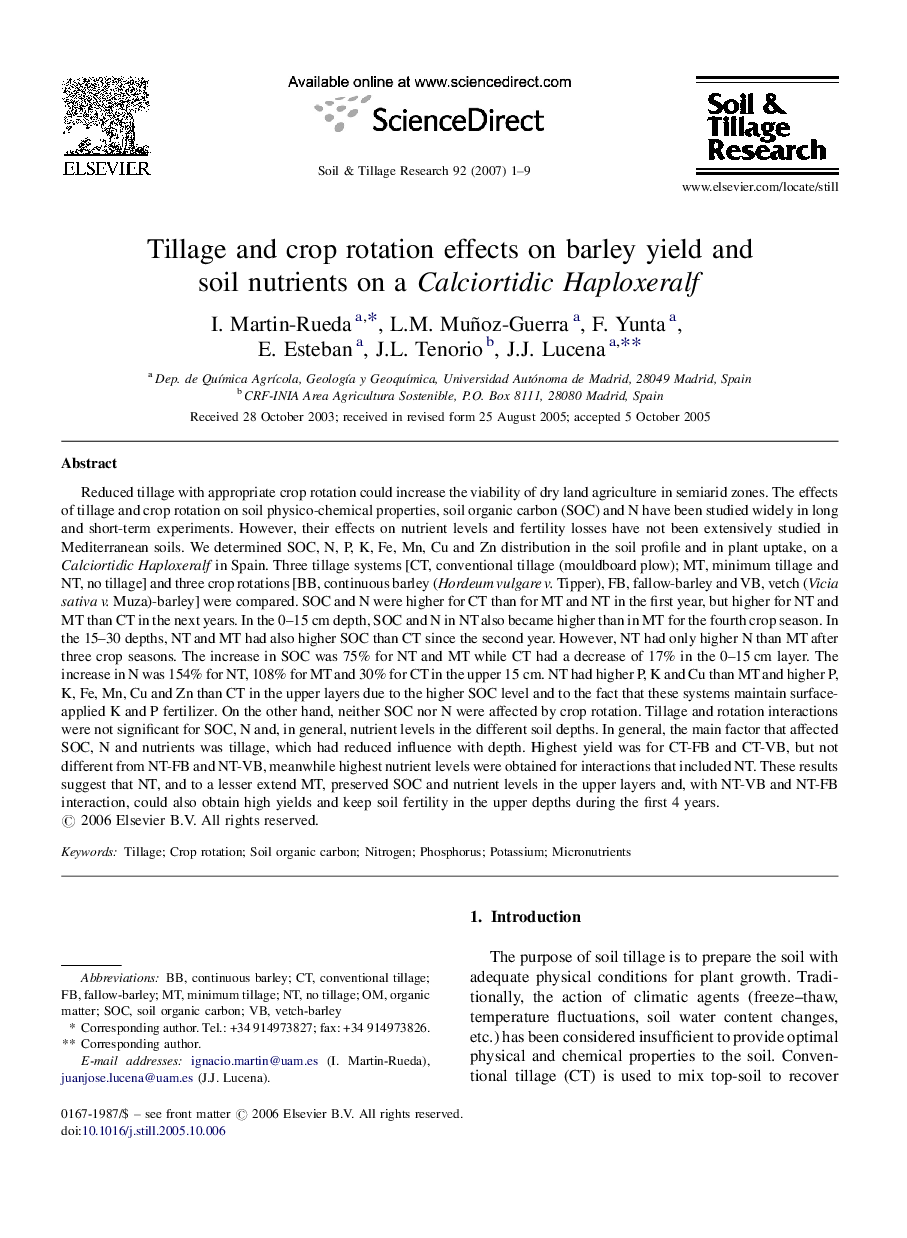| کد مقاله | کد نشریه | سال انتشار | مقاله انگلیسی | نسخه تمام متن |
|---|---|---|---|---|
| 306770 | 513114 | 2007 | 9 صفحه PDF | دانلود رایگان |

Reduced tillage with appropriate crop rotation could increase the viability of dry land agriculture in semiarid zones. The effects of tillage and crop rotation on soil physico-chemical properties, soil organic carbon (SOC) and N have been studied widely in long and short-term experiments. However, their effects on nutrient levels and fertility losses have not been extensively studied in Mediterranean soils. We determined SOC, N, P, K, Fe, Mn, Cu and Zn distribution in the soil profile and in plant uptake, on a Calciortidic Haploxeralf in Spain. Three tillage systems [CT, conventional tillage (mouldboard plow); MT, minimum tillage and NT, no tillage] and three crop rotations [BB, continuous barley (Hordeum vulgare v. Tipper), FB, fallow-barley and VB, vetch (Vicia sativa v. Muza)-barley] were compared. SOC and N were higher for CT than for MT and NT in the first year, but higher for NT and MT than CT in the next years. In the 0–15 cm depth, SOC and N in NT also became higher than in MT for the fourth crop season. In the 15–30 depths, NT and MT had also higher SOC than CT since the second year. However, NT had only higher N than MT after three crop seasons. The increase in SOC was 75% for NT and MT while CT had a decrease of 17% in the 0–15 cm layer. The increase in N was 154% for NT, 108% for MT and 30% for CT in the upper 15 cm. NT had higher P, K and Cu than MT and higher P, K, Fe, Mn, Cu and Zn than CT in the upper layers due to the higher SOC level and to the fact that these systems maintain surface-applied K and P fertilizer. On the other hand, neither SOC nor N were affected by crop rotation. Tillage and rotation interactions were not significant for SOC, N and, in general, nutrient levels in the different soil depths. In general, the main factor that affected SOC, N and nutrients was tillage, which had reduced influence with depth. Highest yield was for CT-FB and CT-VB, but not different from NT-FB and NT-VB, meanwhile highest nutrient levels were obtained for interactions that included NT. These results suggest that NT, and to a lesser extend MT, preserved SOC and nutrient levels in the upper layers and, with NT-VB and NT-FB interaction, could also obtain high yields and keep soil fertility in the upper depths during the first 4 years.
Journal: Soil and Tillage Research - Volume 92, Issues 1–2, January 2007, Pages 1–9